By, Aida Hayani (Lecturer of Islamic Education UAA)
S1 Islamic Religious Education Alma Ata – The word epistemology is unique to study because it can be combined with various other sciences and terms, such as epistemology of tafsir, epistemology of kalam, epistemology of Islamic law, bayani epistemology, burhani epistemology, ‘irfani epistemology, and others. Epistemology is part of the science of philosophy that discusses the method or theory of knowledge. In this short paper, the writer will explain about Islamic epistemology related to the contribution of Muslim scholars in the field of science. This is because the word epistemology can be understood as the science of knowledge in general. Therefore, this short paper explains about Islamic Epistemology: The Contribution of Islam in Modern Science.
There is no doubt that Islam has contributed greatly to Western civilisation, not least in the field of science. Even without the contribution of Muslim scientists, the renaissance that occurred in the West in the 14th to 16th centuries would not have happened. The classical period gave birth to the glorious Islamic civilisation, with the emergence of various branches of science. If we read the history of Islamic civilisation critically, it will undoubtedly be known that Muslim scientists have contributed greatly to science in the West. This was recognised by Western scholars such as Gustave Le Bon (1841-1931 AD), Jean Jaques Risler (1940-2016 AD), Rom Landau (1899-1974 AD) and Alfred Guillaume (1888-1965 AD). There is even a lot of literature written by Western (outsider) and Eastern (insiders) scholars to prove this.
Muslim scientists have contributed in various fields, such as mathematics. Some say that Muslims learnt mathematics from the Indians. In the 9th century, al-Fazārī had translated a very famous work of Indian mathematics into Arabic under the title Shindind al-Kabīr. In this work, Indian mathematicians had introduced numbers from one to nine, which were known to the Arabs as Indian numerals. In the Western world, they are known as Arabic numbers. A remarkable achievement in this field was made by the Muslim mathematician Muḥammad b. Mūsā al-Khawārizmī (d. 833 CE). He had invented the number zero as ṣifr, a word that later formed the words cipher and zero in European languages. Therefore, there was a major revolution in mathematics in the Islamic world in the 9th century.
In addition to discovering the number zero, al-Khwārizmī is also known as the formulator of “algebra”, a name from the branch of mathematics, taken directly from the title of his book al-Jabr wa al-Muqābalah. His name was even secretly immortalised in the word “logarithm”, a mathematical theory derived from the English word algorithm. It was eventually discovered that the name was a translation or transliteration of al-Khawārizmī himself. In the field of medicine, the most famous Muslim scientist was Ibn Sīnā, known in the West as Avicenna. His medical work al-Qanūn fī al-Ṭibb (The Canon) was translated into Latin in the 12th century, and has been the main textbook for 600-700 years in famous universities in Europe, such as Oxford, Paris, and Budapest. To this day, al-Qanūn fī al-Ṭibb remains intensively studied in parts of the Islamic world, especially in Iran and Pakistan. One German university has made the book a textbook in the field of medicine. According to Goodman, al-Qanūn fī al-Ṭibb not only discusses medical issues, but also pharmacy, pharmacology, and zoology, surgery, and neurology. In addition to being well-versed in the field of medicine, Ibn Sina also mastered physics, mathematics, psychology, and mycophysics.
In the field of physics, two famous Muslim scientists are al-Birunī (d. 1038 CE) and Ibn Haiitham (d. 1041 CE). Al-Biruni is known as a Muslim encyclopaedist because he mastered many branches of science, such as geography, geology, mathematics, mineralogy, and even ethnography. He even preceded Newton in discovering the law of gravity. Al-Biruni was the first to criticise Aristotle’s view that the centre of gravity is dual; the earth’s core for earth and water, and the sky for air and fire. The thing that causes one element to float, and the other to sink is due to the different specific gravity of the elements. Through intensive experiments in his physics laboratory, Al-Biruni was able to determine the specific gravity of more than twenty chemical elements. The results are still quite accurate, even when compared to modern specific gravity measures. In addition, Al-Biruni also managed to measure the circumference of the earth mathematically, using trigonometric formulae.
Besides al-Biruni, Ibn Haitsam, known in the West as Alhazen (from al-Ḥasan, his first name), wrote a seven-volume work on optics entitled al-Manāẓir. Al-Birumi’s contemporaries included the work in the category of physics, as optics at that time was included in the study of physics. The most important discovery of the work is related to the theory of vision. At the time of al-Biruni, two very confusing theories about vision had developed. Aristotle and those who agreed with him, including al-Kindī, said that we can see an object because our eyes emit light on the object. Mathematicians, on the other hand, said the opposite, that we can see an object because it reflects light into our eyes. To solve this problem, Ibn Haitsam conducted his own experiment on light and its effect on the eye. His conclusion was that the second opinion (mathematicians) was correct. We can see an object because it reflects light on our cornea. From then until now, it is this opinion that is considered correct in the theory of vision.
In its development, Ibn Haitsam’s optical theory turned out to be a major influence on optical theory in the West. Western scientists who were influenced by the theory include Roger Bacon (1214-1292 AD), Witelo/Vitello (1230-1275 AD), Peckham, Johannes Kepler (1571-1630 AD), and Isaac Newton (1643-1727 AD). Ibn Haitsam had taken important steps in understanding the spectrum of light and researching how rainbows occur through the theory of reflection and refraction. He was also able to invent optical instruments, such as convex, concave, and parabolic glasses, spectacle lenses, telescopes, and even the first to use the “camera obcura”, an inverted image in a camera lens for experiments.
In the field of astronomy, there were also many Muslim scientists, such as al-Battanī, al-Farghanī, al-Biruni, Nāshiruddīn al-Thūsī (d. 1274 CE), Qathbuddīn al-Syīrāzī, al-Majrithi, Ibn Shatir, Ibn al-Nafis (d. 1288), and others. What is distinctive about Islamic astronomy is its non-Ptolemius tendency. Muslim astronomy books are full of sharp criticisms of Ptolemy’s geocentric astronomical system. A striking idea in this regard is that developed by Nāshiruddīn al-Thūsī and Ibn Shātir, known as “Thusi’s Couple”. It is a link between two vectors of equal and constant length rotating at a constant speed. This is a very different planar module from the one developed by Ptolomeus. From all these brief explanations, it can be concluded that Islam has contributed greatly to the development of science in the Western World in particular and in the world in general. Therefore, Muslim scientists cannot be underestimated. Hopefully.







